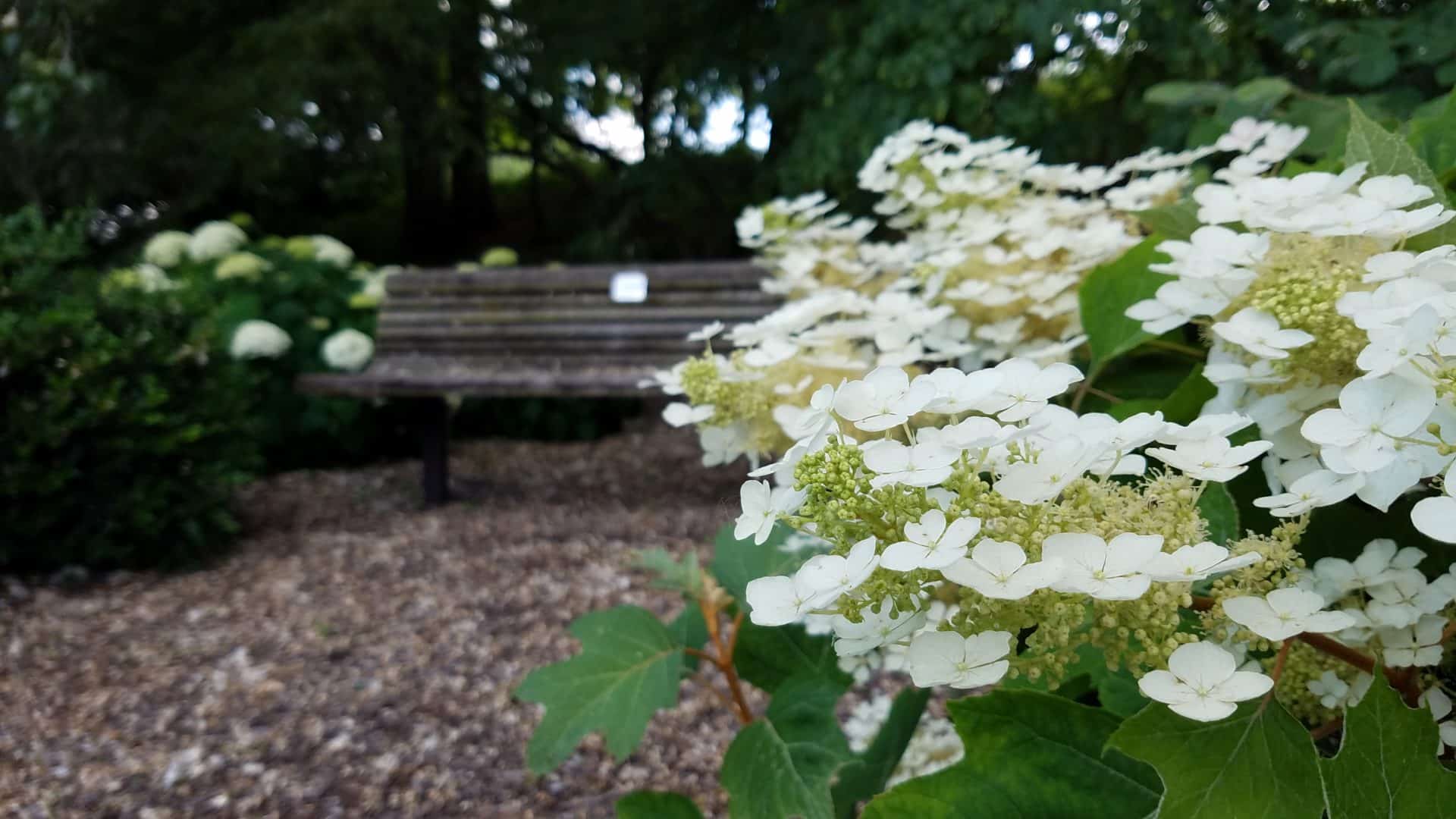Plants
Oakleaf hydrangea
Hydrangea quercifolia

This outstanding shrub is native to the southeastern U.S. where it inhabits moist wooded slopes, ravines, and the banks of streams. Hydrangea quercifolia is one of two hydrangeas native to North America, the other one being H. arborescens of the eastern U.S. Hydrangea quercifolia was first described by William Bartram in his Travels Carolina, 1791.
The specific epithet quercifolia refers to a similarity in leaf shape to red oak, Quercus rubra. This leaf shape is unusual among hydrangeas. The only other Hydrangea with a lobed leaf, albeit much shallower, is the rare H. sikokiana of Japan, hardy to USDA Zone 6.
Oakleaf hydrangea is useful in a mixed border, en masse or as a specimen in sun or shade. By the north terrace in the Arlene and Arthur S. Holden Jr. Butterfly Garden is a fine grouping of five Hydrangea quercifolia ‘Sikes Dwarf’ measuring 2 ft. tall were planted on July 21, 2006. They had grown 3 to 4 ft. tall and 4 to 5 ft. wide as of September 2008. Planted nearby are a number of foliage plants including Heuchera ‘Caramel’ and ‘Citronelle’ with attention getting apricot and yellow hues of their lobed leaves echoing the deep green lobed foliage of ‘Sikes Dwarf’ in the background.
The most common variety of oakleaf hydrangea at The Holden Arboretum is Snow Queen, a Princeton Nurseries introduction prized for its superior cold hardiness and floral display. The flower buds of Snow Queen have survived the cold of every winter for the past 20 years in Kirtland, except 1994 (-26°F), with our finest specimen measuring 6.5 ft. x 11 ft. by the Cooper Administration building. In winters past, white-tailed deer have browsed this plant and other Hydrangea in our gardens.
Hydrangea quercifolia is long lived. A planting at Lantern Court in the early 1930s has reached a height of 8 feet in the shade of tall oaks east of the main drive. This small group blooms well in the shade and the individuals have a more open habit of growth than those in sunny locations. In this shaded spot after establishment, supplemental watering has not been required. Oakleaf hydrangeas are not as prone to drought as are bigleaf hydrangeas, H. macrophylla. However, Hydrangea quercifolia has suffered some mortality in our gardens due to waterlogging in poorly drained heavy soil.
Oakleaf hydrangea is an attractive foliage plant that has significant textural interest in addition to its remarkable summertime display of white flowers borne in 4-10 inch long panicles. At Holden, the floral show typically starts in late June and lasts through July. In August, the sepals of the sterile florets turn pinkish, remaining so well into September. In October, if and when there is a frost, the foliage takes on burgundy-red hues and some purplish tints that last into early December.
Although the large leaves – up to 8” long – remain late and snows often arrive early there has been remarkably little breakage of the relatively brittle branches on our specimens. In winter, their texture is coarse with gaunt main stems peeling and exfoliating cinnamon and tan bark.
On Sept. 1, 1954 Holden Horticulturist Lew Lipp distributed three rooted cuttings from Hydrangea quercifolia at Lantern Court to rare plant club members. Today, Hydrangea quercifolia and a number of its cultivars are widely available.
Photo Credit; Dan Keck from Ohio, CC0, via Wikimedia Commons



